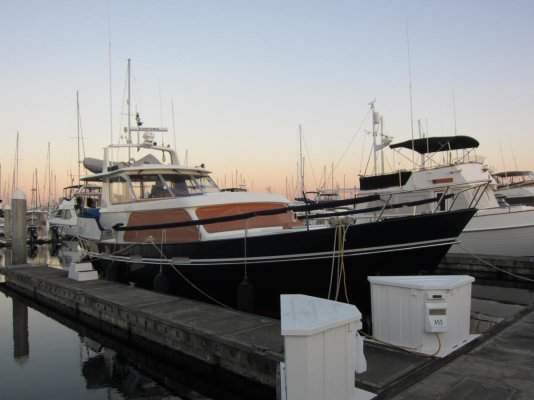ChesapeakeGem
Senior Member
We choose to dock bow first.
My job is to grab the Stern line with the hook tie her off tight to the dock.
Allowing my Captain to bring the bow in
Then grab the bow line or spring line
We have a floating docks in our marina
Our slip requires us to tie up on our port side.
Well.... our boat is a 36' Aft Cabin Sea Ray.
The lines are laying on the dock about 4' from where I have to grab them.
Any suggestions as to how I can get the lines set up so they are easier to grab?
My job is to grab the Stern line with the hook tie her off tight to the dock.
Allowing my Captain to bring the bow in
Then grab the bow line or spring line
We have a floating docks in our marina
Our slip requires us to tie up on our port side.
Well.... our boat is a 36' Aft Cabin Sea Ray.
The lines are laying on the dock about 4' from where I have to grab them.
Any suggestions as to how I can get the lines set up so they are easier to grab?

